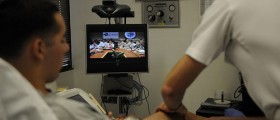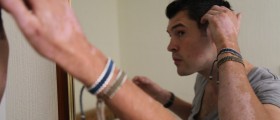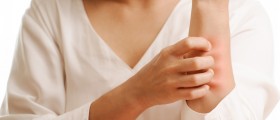Fungal skin infections are actually frequently reported infections affecting people of all ages. Fungi are prone to affect humans because the skin contains keratin, a protein that is found in our skin, hair and nails in abundant quantities and which is a source of food for fungi.
- An analysis of fungal skin disease trends in 2017 in 195 countries worldwide was conducted using the Global Burden of Disease Study database, including prevalence rates, age and sex patterns, and fungal burden, using disability-adjusted life years (DALYs). Age-standardized DALYs were also compared to the sociodemographic index values of all the countries in 2017.
- The age-specific fungal skin disease DALYs in 2017 showed a right-skewed distribution, with a peak between 1 and 5 years of age.
- The world region with the greatest burden of fungal skin disease was sub-Saharan Africa (DALY rate 89.3 per 100,000 males, 78.42 for females), and the individual country with the greatest DALY rate was Mali.
- The Global Burden of Disease super region with the lowest fungal skin disease burden had high incomes (DALY rate 33.12 per 100,000 males, 30.16 for females), which includes southern Latin America, western Europe, high-income North America, Australasia, and high-income southern Pacific.

All fungal skin infections are classified into two groups basically depending on the type of fungus responsible for the infection.
Types of Fungal Skin Infections
Dermatophyte Infections
Dermatophyte infections are caused by Dermatophytes that may settle in the skin, hair or nails. One of the common Dermatophyte infections is Athlete's foot. This is a fungal infection affecting the feet. The space between toes is covered with fungi and becomes red, dry, itchy, and scaly.
Blisters and cracks may occur as well. Athlete's foot occurs in people who use public swimming pools, showers and saunas. The infection may spread to fingers if one does not maintain impeccable hygiene while suffering from Athlete's foot and touches the infected toes without washing his/her hands afterward.
Nail infections caused by Dermatophytes are also frequently reported. The affected nail/nails is malformed, thickened and crumbling. Initially, there is skin discoloration which points out that something is wrong with the affected nail.
Ring worm is a fungal skin infection that is further classified depending on the part of the body affected. Ringworm of the groin, also known as tinea cruris, predominantly affects young men. The fungus is responsible for itchy and red rash in the groin area.
Ringworm of the body or tinea corporis is a fungal skin infection usually affecting the abdomen or extremities, characterized by red, raised, or flat patches and rings that most commonly merge. The infection spreads and is scaly at the edges. Ring worm of the scalp leads to inflammation of the skin on the head and loss of hair. This type of fungal skin infection is frequently reported in children of African-Caribbean origin.
Yeast Infections
There are several types of yeast infections including intertrigo, pityriasis versicolor and thrush.Intertrigo affects skin folds and is caused by Candida albicans. The most commonly affected parts of the body are the armpits, groin area, and the skin under the heavy breast. The infection is typically itching. The skin affected by fungi becomes sore, covered in spots and scales and there may be white-yellow curd over the infected area.
Pityriasis versicolor is responsible for obvious skin depigmentation. It affects teenagers and young adults. The skin is either covered with light patches (these affect tanned and darker skin) or dark patches (which form on pale type of skin).
Thrush is one more infection caused by Candida albicans. This fungus is normally found on the skin, but in case of certain imbalance, it may start multiplying uncontrollably, causing infection. Thrush affects people suffering from diabetes, pregnant women and those using antibiotics more than healthy individuals. Apart from affecting the skin, Candida may cause infections in the oral cavity, vagina and intestine as well.

















Your thoughts on this
Loading...